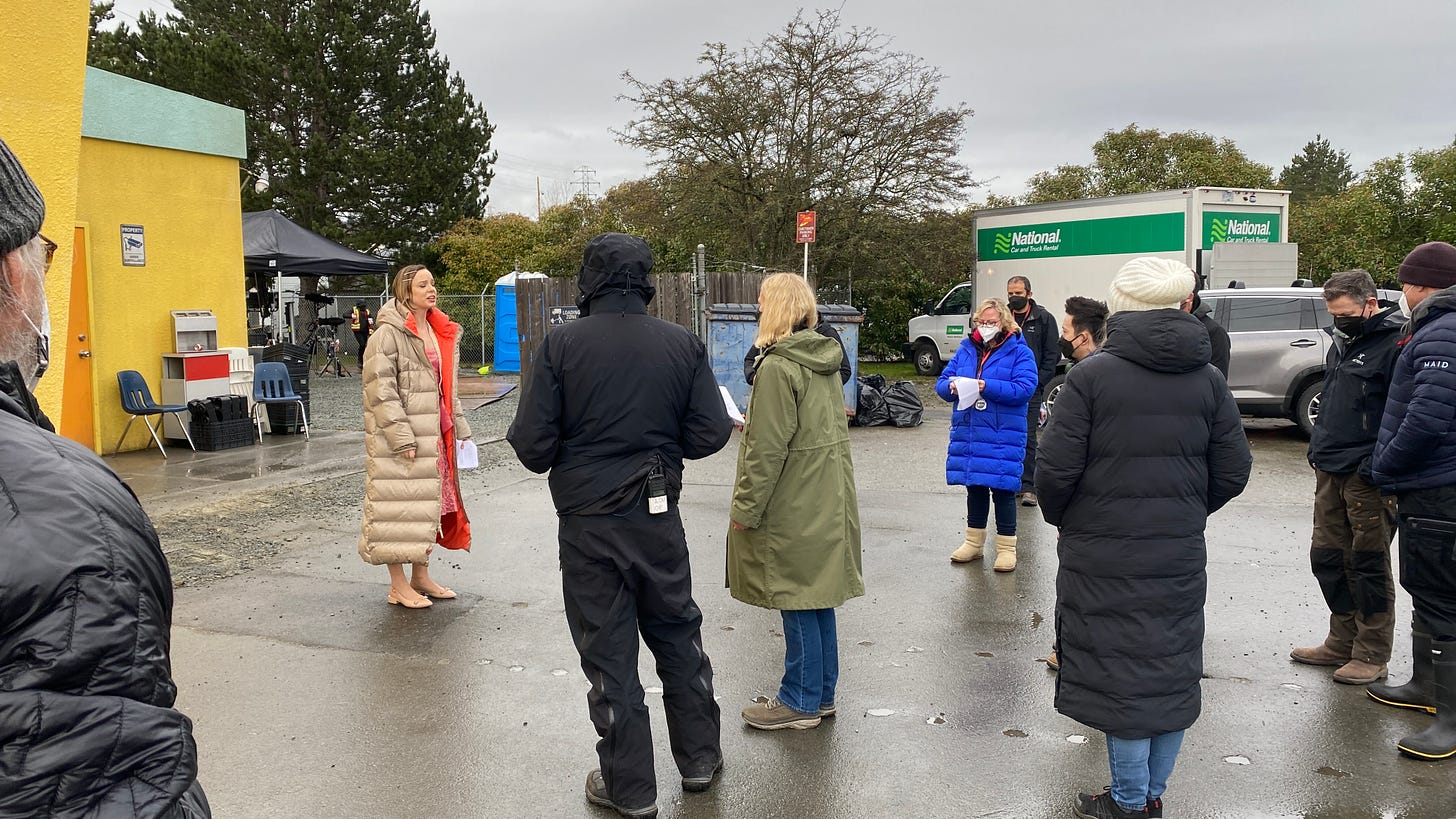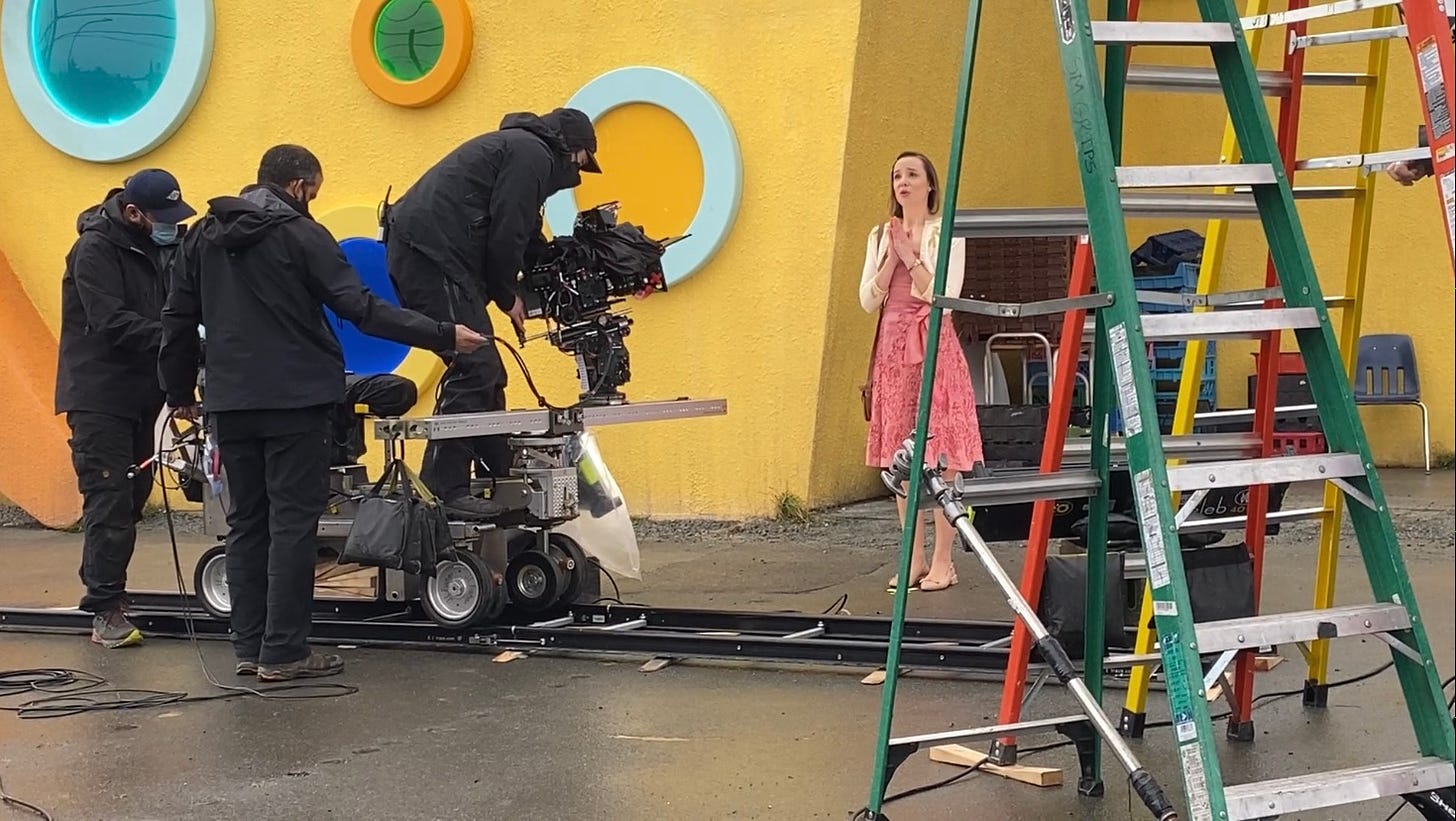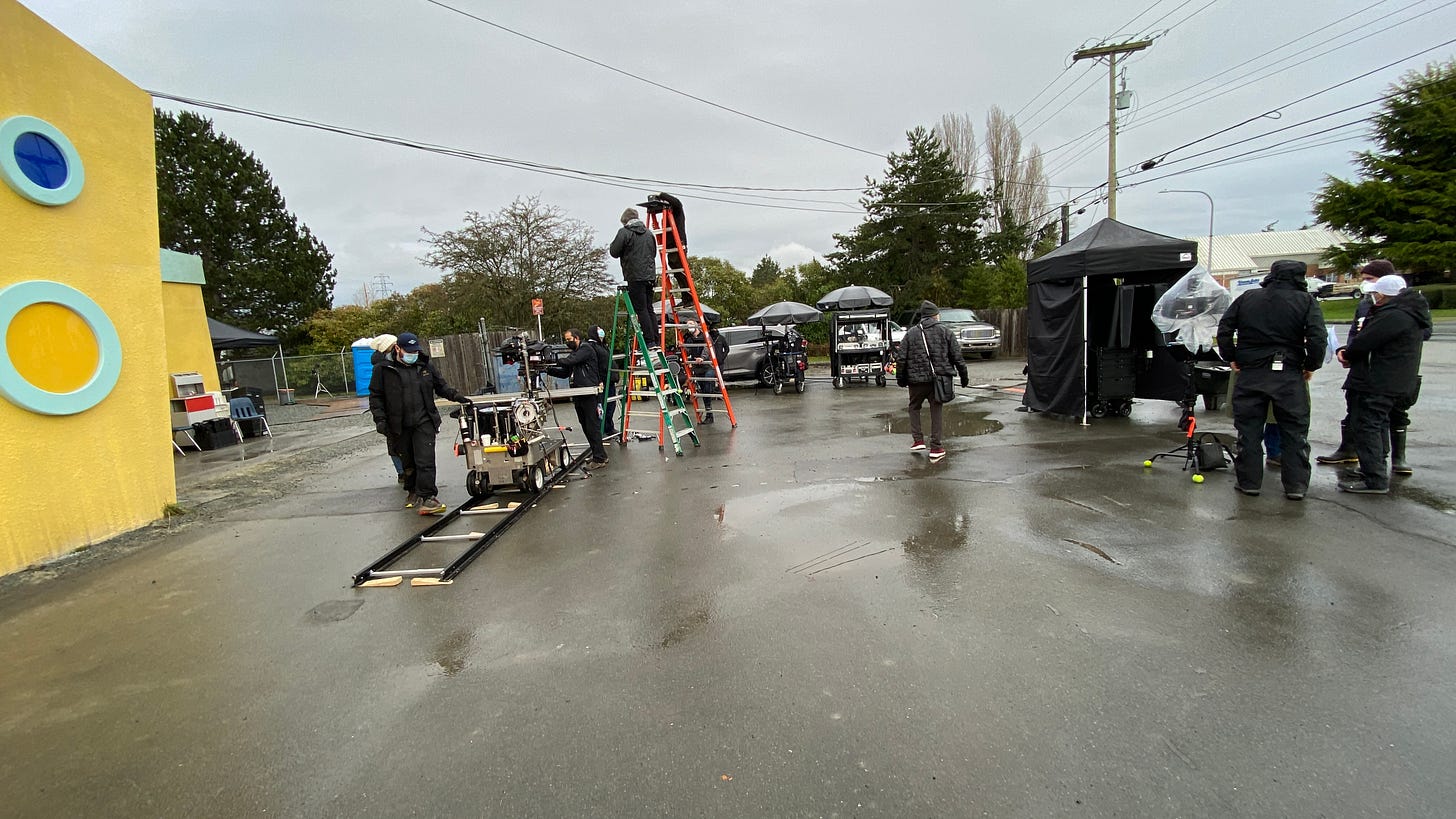On-set and behind the scenes at Reginald the Vampire (Part 2)
This continuation of the series covers my first day watching filming in Victoria, BC
Missed the first post in this series? Read it here.
After settling briefly at my micro AirBnB in Victoria, Jeff took me back to the Slushy Shack … which, if you remember from the last post, began life as a muffler shop. (And, amusingly, became one again after Season 1’s shooting was finished. I guess they had to build it all again for Season 2?)
When I arrived, the sun was still up but on its way down. They were shooting a few daytime shots with non-vampire characters as well as setting up for the night’s work.
This was the first setup I saw. The ladder would become an up-high camera mount. Not entirely sure why they did that because they had a crane, but hey, I’m no cinematographer.
The wheeled contraption on rails is a camera dolly. One operator pushes it while another films, so you can get nice, smoothly flowing shots. (There’s a video of it in use later on.)
They were preparing to shoot the scene where, if you’ve seen the show, Sarah comes out of the Shack’s back door and offers a prayer to mirror Reginald’s. They worked in phases. First, they’d bring out the actors and have them run through their lines in a casual, not-for-cameras sort of way, sometimes figuring out what those in the biz call “blocking”: the way actors and the frame of the camera move throughout the scene. Then, they’d set up the equipment: cameras, but also things like reflectors and lights. With things in place, the actors would formally dress and prep for the scene and they’d sometimes run it through a few more times. Finally, they’d shoot the scene for real. I saw a few shots done in one take, but others took three, four, or sometimes more.
Here’s what it looked like when Em, as Sarah, was rehearsing her prayer for the first round. It was pretty cold even during the day, which is why she’s wearing her coat despite the actual scene calling for no coat:

Once the setup and first rehearsals were established, they ran the scene a few times for real using the cameras, focused a bit more on the flow of the scene and how things looked and sounded.
Maybe this would be a good time to detour a little and talk about the tech and methods involved. That part fascinated me, and truly gave me an appreciation of how the whole shooting thing works — and how many people it takes to get it right.
Shooting here, recording there, and micromanaging along the way
An important part of most sets is what’s called “video village.” It’s basically a place away from the action where what the cameras see can be monitored, managed, and of course recorded.
Now, I’m no great authority, so I might get some of the details and caveats wrong at this point, but I think I’m pretty close. It works like this:




